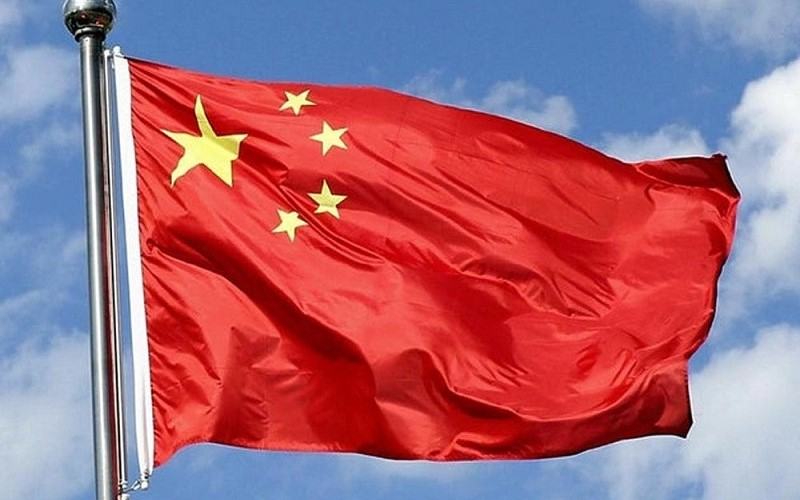
China’s national flag
14:21 JST, November 15, 2023
BEIJING (Reuters) – China’s industrial output and retail sales growth beat expectations in October, but the underlying economic picture highlighted significant pockets of weakness with the crisis-hit property sector continuing to forestall a full-blown revival.
The world’s second-biggest economy has struggled to mount a strong post-COVID recovery as distress in the housing market, local government debt risks, slow global growth and geopolitical tensions have dented momentum. A flurry of policy support measures have proven only modestly beneficial, raising pressure on authorities to roll out more stimulus.
China’s industrial output grew 4.6% in October year-on-year, accelerating from the 4.5% pace seen in September, data from the National Bureau of Statistics (NBS) showed on Wednesday, beating expectations for a 4.4% increase in a Reuters poll. It also marked the strongest growth since April.
Retail sales rose 7.6% in October with improvement in both auto and restaurant sales growth, quickening from a 5.5% gain in September and hitting the fastest pace since May. Analysts had expected retail sales to grow 7.0% due to the low base effect in 2022 when COVID curbs disrupted consumers and businesses.
Analysts struck a cautious note on the upside data surprise, noting that the property sector remains a weak link for the economy and pointed to the lack of major reforms as another impediment to sustainable longer term revival in growth.
“Due to the impact of holidays and low base effect in 2022, year-on-year figures cannot reflect the actual momentum of the economy,” said Xing Zhaopeng, senior China strategist at ANZ.
He said month-on-month figures suggest economic momentum has further weakened with “increasing deflationary risks.”
Louise Loo, China economist at Oxford Economics, said prolonged weakness in external demand could hamper industrial production despite strengthening last month as destocking pressures eased further.
Consumption didn’t make much headway either during the eight-day Golden Week holiday earlier in October. Trips made in that period missed government estimate as economists say consumers are concerned about their jobs and income growth in an uncertain employment market.
The nationwide survey-based jobless rate stayed at 5.0% in October, unchanged from September, the NBS data showed. Youth unemployment, which hit a record high 21.3% in June, wasn’t available after the statistics bureau stopped publishing it since July.
China has been ramping up efforts to revive its post-COVID economy with a slew of policy support measures in recent months, although the positive effects have been marginal so far.
Wednesday’s upbeat data comes as a raft of other indicators for October released over recent weeks pointed to muted growth momentum. Imports grew unexpectedly, but exports shrank at a quicker pace, household borrowing remained weak, consumer prices swung lower while factory deflation persisted.
Authorities are faced with a challenging task as any aggressive monetary support would further widen interest rate differentials between China and the West, especially the United States, and dent an already weakened yuan. That could intensify capital outflows, while Beijing is wary of a return to the big-bang fiscal stimulus of the past which created massive debt and hamstrung the economy.
The economy grew faster-than-expected in the third quarter, with analysts generally expecting it to reach the government’s full-year growth target of around 5%, though a full-blown recovery is still some time away.
The yuan CNY=CFXS held near a more than two-month high after surprisingly softer U.S. inflation reading overnight boosted bets that the Federal Reserve had reached the end of its tightening cycle.
PROPERTY, INVESTMENT DISAPPOINT
The country’s central bank, People’s Bank of China (PBOC), boosted liquidity injections but kept the interest rate unchanged when rolling over maturing medium-term policy loans on Wednesday.
In a rare revision last month, the government also lifted its 2023 budget deficit to around 3.8% of gross domestic product from 3% to account for the planned issuance of 1 trillion yuan ($137.10 billion) in sovereign bonds.
The PBOC has cut banks’ reserve requirement ratio (RRR) twice this year to free up liquidity to aid the economic recovery. Analysts widely expect another RRR cut and an interest rate cut in the final months of this year.
China’s crisis-hit property sector has yet to see a meaningful rebound despite strengthened support measures for homebuyers, including relaxing of home purchase restrictions, lowering in borrowing costs and other programs.
Property investment fell 9.3% in January-October year-on-year, after a similarly sharp 9.1% drop in January-September.
Fixed asset investment disappointed with a 2.9% expansion year-on-year in the first 10 months, missing expectations for a 3.1% rise. It grew 3.1% in the January-September period.
Confidence among private businesses also remained depressed, with investment in the sector shrinking 0.5% during January-October, narrowing slightly from the 0.6% decline in the first nine months.
“Overall, the data published today suggest that the recovery was struggling to gain a strong footing at the start of Q4, but it was not nearly as weak as some had feared,” said Sheana Yue, China economist at Capital Economics.
“Policy looks set to remain supportive, and possibly even stepped up to prevent the economy from backsliding.”
($1 = 7.2939 Chinese yuan renminbi)
"News Services" POPULAR ARTICLE
-

American Playwright Jeremy O. Harris Arrested in Japan on Alleged Drug Smuggling
-

Japan’s Nikkei Stock Average as JGB Yields, Yen Rise on Rate-Hike Bets
-

Japan’s Nikkei Stock Average Licks Wounds after Selloff Sparked by BOJ Hike Bets (UPDATE 1)
-

Japanese Bond Yields Zoom, Stocks Slide as Rate Hike Looms
-

Japan’s Nikkei Stock Average Buoyed by Stable Yen; SoftBank’s Slide Caps Gains (UPDATE 1)
JN ACCESS RANKING
-

Keidanren Chairman Yoshinobu Tsutsui Visits Kashiwazaki-Kariwa Nuclear Power Plant; Inspects New Emergency Safety System
-

Imports of Rare Earths from China Facing Delays, May Be Caused by Deterioration of Japan-China Relations
-

University of Tokyo Professor Discusses Japanese Economic Security in Interview Ahead of Forum
-

Japan Pulls out of Vietnam Nuclear Project, Complicating Hanoi’s Power Plans
-

Govt Aims to Expand NISA Program Lineup, Abolish Age Restriction


























